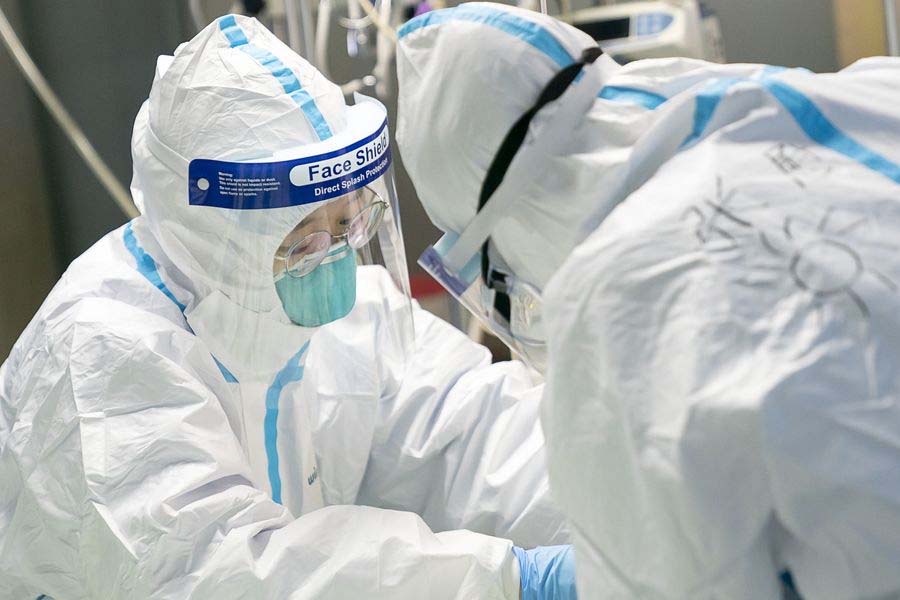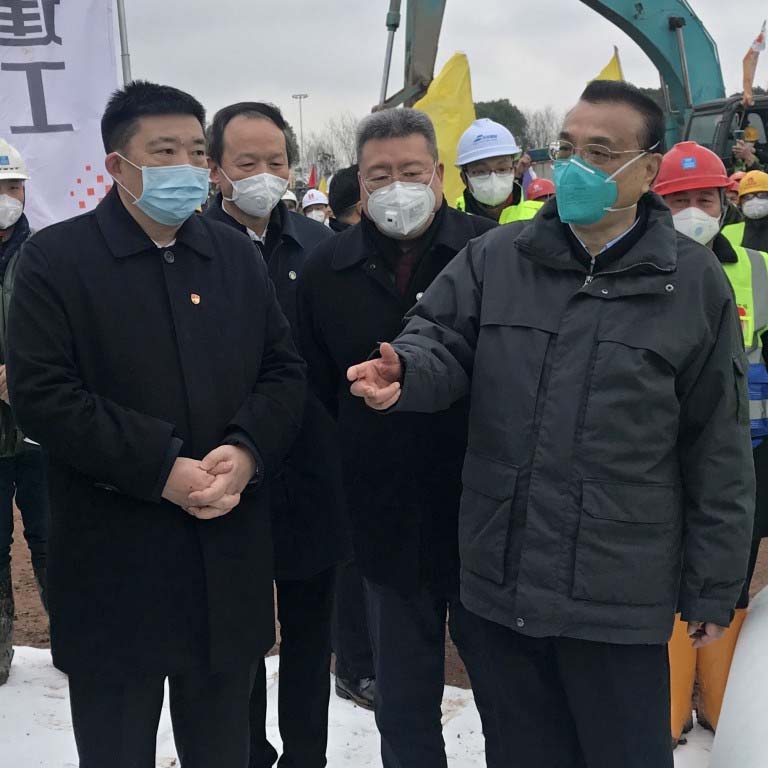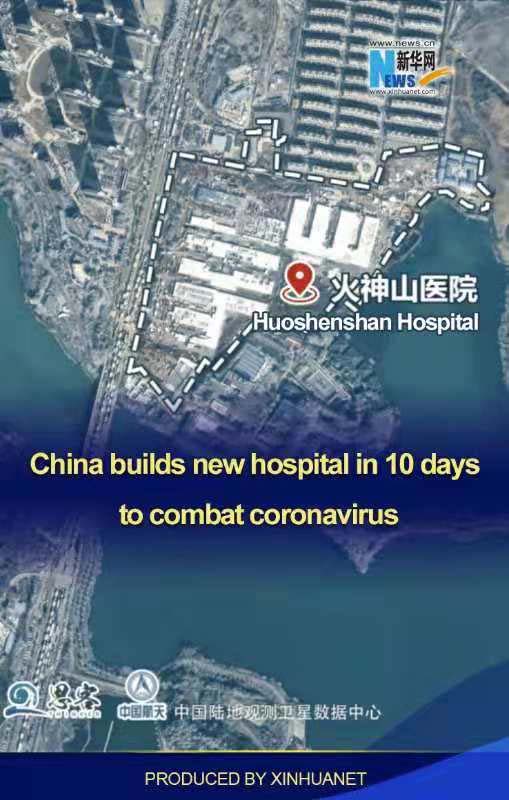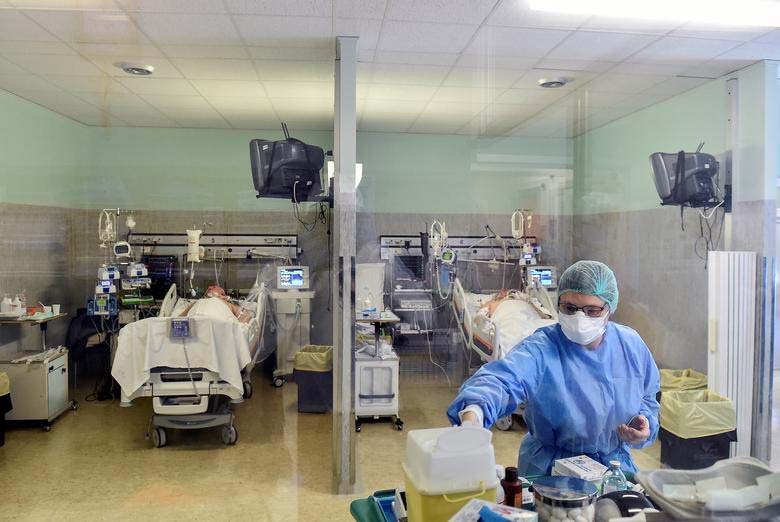The world’s attention is riveted on the latest health epidemic: the spread of a new coronavirus disease (COVID-19) that has killed three percent of those afflicted.
While its fatality rate pales in comparison to the common flu, its newness has raised the deepest dread among humans: fear of the unknown.
The disease knows no borders, bows to no authority. It has taken down peoples of all races and stature. Cities – including Metro Manila – and at least one country – Italy – have closed its borders in efforts to contain its rampage.
Since the outbreak of COVID-19 in late 2019 – when the novel coronavirus was still unnamed and scientists raced to identify this new sickness – Wuhan City in China’s central province of Hubei became the focus of public attention.
Here is a brief timeline and a glimpse into what the world is doing to combat this newest global threat.

Dec. 8, 2019: Notification of the earliest case of the suspected pneumonia of unknown cause, N-CoV, which was diagnosed on Dec. 1. Many more cases reported, mainly in Wuhan.
Dec 30: Wuhan Health Committee Medical Administration issued the emergency notice on the treatment of pneumonia of unknown causes and requested all medical institutions to keep count of these cases and report them promptly.
Dec. 31: China officially reports to the World Health Organization an epidemic situation of pneumonia suspected to be SARS (Severe Acute Respiratory Syndrome). Relevant virus-typing tests, isolation treatment, public opinion control, terminal disinfection and other work were in progress. Experts from the National Health Commission arrived in Wuhan and carried out testing and verification. Several patients with pneumonia related to the South China seafood market were transferred to Wuhan Jinyintan Hospital (武漢市金銀潭醫院) for isolation and treatment. Outsiders and their families were not allowed to visit.
Jan. 2, 2020: South China seafood market was closed, to be cleaned and disinfected.
Jan. 3: Wuhan Health Commission issued a circular on viral pneumonia of unknown causes: 44 cases were found in Wuhan, including 11 severe cases. Investigations on probable animal-to-human transmission is undertaken.
Jan. 7-8: Positive results of the new coronavirus were detected in Wuhan in 15 cases, initially identified as an unknown pathogen that causes viral pneumonia. Hu Ke (胡克), expert and professor of respiratory department of Hubei People’s Hospital, said most of the patients’ conditions were mild to moderate and some of the patients initially admitted have been cured and discharged.
Jan. 12: The novel coronavirus gene sequence information was reported by the National Health Council and WHO.
Jan. 13: Cases of N-CoV in Wuhan was recorded at 187 . First case outside China is reported in Thailand.
Jan. 18: Baibuting Garden Community in Jiang’an District, Wuhan held a Lunar New Year banquet for more than 40,000 families.
Jan. 20: Human transmission of the new coronavirus infection is confirmed. Premier Li Keqiang announced stringent control measures, banning tourist groups, and transport of live animals.

Jan. 21-22: The WHO experts went to Wuhan, said N-CoV, a new form of pneumonia may cause sustained human transmission. The infection is reported to have spread to Beijing and Shanghai. Cases are reported to have topped 200. Hubei province launched level II emergency response to public health emergencies
Jan. 23: Wuhan shut down, airport and railway station exit channel closed. However, nearly 300,000 had left the city by rail for the Chinese New Year celebration.
Jan. 24: State Development Bank issued emergency loans of RMB2 billion to support Wuhan’s prevention and control of N-CoV. 150 military personnel from three military medical universities were deployed on Chinese New Year’s Eve.
Jan. 25: Wuhan epidemic prevention headquarters announced building of Xiaotangshan Hospital within two weeks, with 1,300 beds.
Jan. 26: Wuhan Transport Department established an emergency taxi fleet, expropriated 310 buses, and guaranteed the needs of patients for medical treatment.
Jan. 27: Wuhan mayor Zhou Xianwang (周先旺) admitted the delay in disclosure of information about N-Cov and offered to step down as soon as the epidemic situation is controlled.
Jan. 30: The WHO declared coronavirus a global emergency as the virus had spread to all 31 Chinese provinces. India and the Philippines confirmed their first cases of the virus. The Philippine patient was confirmed to have come from Wuhan.
Jan. 31: Confirmed cases in China jumped to 9,809. Russia, Spain, Sweden and the United Kingdom confirmed their first cases of the virus.

Feb. 1-20: Wuhan health agencies continue to fight the virus. Eleven hospitals with more than 10,000 beds are built. Nearly 6,000 people are in hospital isolation, more than 20,000 people in home isolation.
Feb. 1: New cases were confirmed in Australia, Canada, Germany, Japan, Singapore, the US, the UAE and Vietnam. Li Wenliang (李文亮), doctor in Wuhan Central Hospital who was admonished for reporting SARS-like cases in December was admitted and tested positive for N-Cov.
Feb. 2: The first death is reported in the Philippines, a Chinese male from Wuhan.
Feb. 5: The 3,700 people on board the Diamond Princess cruise ship, off Yokohoma, Japan, begin a two-week quarantine after 10 people tested positive for the virus.
Feb. 7: Outpouring of grief, pain and anger at the death of Li Wenliang, an ophthalmologist in Wuhan who sounded the alarm on a possible outbreak of a SARS-like illness. State Commission promised to conduct comprehensive investigation. Social Security paid out. RMB820,000 as insurance and death and funeral benefits to Li’s family.
Feb.10: National Health Commission reports 19 provinces support 16 cities and counties in Hubei except Wuhan.
Feb. 11: The WHO officially names the virus Covid-19.
Feb. 13: China’s Communist Party’s Central Committee replaced Hubei province and Wuhan Municipal Committee members.
Feb. 14: First report out of Africa, Egypt reports first case. France reports Europe’s first death.
Feb. 18: China’s daily infection figures drop below 2,000 for the first time since January, with the country’s health commission reporting 72,436 infections on the mainland and 1,868 deaths.
Feb. 19: Iran reported two deaths from the coronavirus.
Feb. 20: South Korea reported its first death.
Feb. 21: Israel reports its first confirmed case after a woman who returned from a cruise ship tested positive. Lombardy, Italy, reported the first local transmission of the virus with three new cases, bringing the total in the country to six infections.
Feb. 24: Kuwait, Bahrain, Iraq, Afghanistan and Oman all reported their first cases of the virus. Cases in South Korea ballooned to 833 cases with seven deaths. The death toll in China rose to 2,595 among 77,262 confirmed cases.
Feb: 26: Global death toll nears 2,800 with around 80,000 confirmed infection cases reported globally. Norway, Romania, Greece, Georgia, Pakistan, North Macedonia and Brazil all detected their first cases of the coronavirus.
Feb. 29: South Korea reports its highest daily number of confirmed cases yet, 813, bringing the country’s total to 3,150 with 17 deaths. Iran also reported the number of its cases had jumped 388 cases to 593 in 24 hours, with the death toll reaching 43. Qatar reports its first case.

March 3: Italy death rate reached 77, equaling deaths in Iran.
March 7: Nearly 3,500 people have died and another 102,000 people infected across more than 90 countries. China’s National Health Commission reported 99 new cases, down from 143 cases the day before, with a total of 80,651 cases nationwide. A Iranian member of Parliament dies from COVID-19, bringing the death toll to 124 out of 4,747 reported cases. The first local transmission is reported in the Philippines.
March 8: The Italian government imposed a strict quarantine in the state of Lombardy and 14 other areas in the north, affecting a total of 16 million people.
March 9: Iran released about 70,000 prisoners because of the coronavirus outbreak. Germany reported its first two deaths, with at least 1,100 confirmed cases in the country. Malacañang orders the closure of all schools until Mar. 14.
March 10: Lebanon and Morocco reported their first deaths from the virus, while Democratic Republic of the Congo, Panama and Mongolia confirmed their first cases of infection.
March 11: The WHO declared the coronavirus outbreak a pandemic, as Turkey, Ivory Coast, Honduras and Bolivia confirmed their first cases.
March 12: More than 4,600 have died and infections exceeded 126,100 cases. China reported 15 new cases, its lowest number since the daily reporting on infections began seven weeks ago. Cases in the Philippines stand at 52. President Duterte issues an executive order for “community quarantine” in the National Capital Region, with further provisions on city, municipality and barangay lockdowns.
March 23: Philippine cases spiked to 380, 17 have recovered, and 25 deaths.
Sources: Al Jazeera reports, Wuhan Health Committee, WHO, RNZ (New Zealand), DOH.





